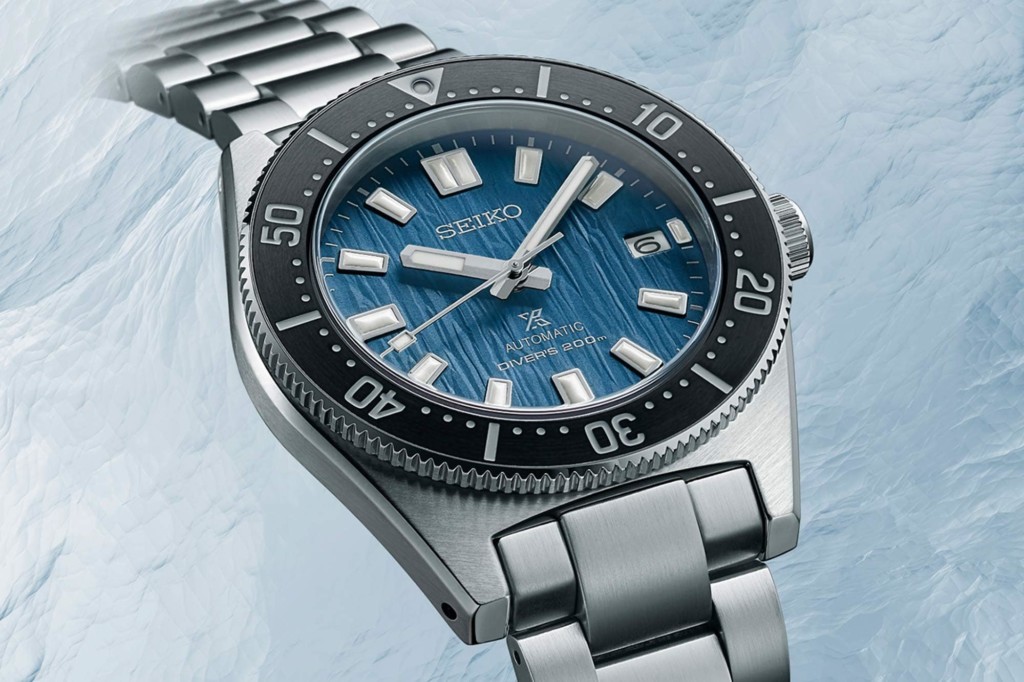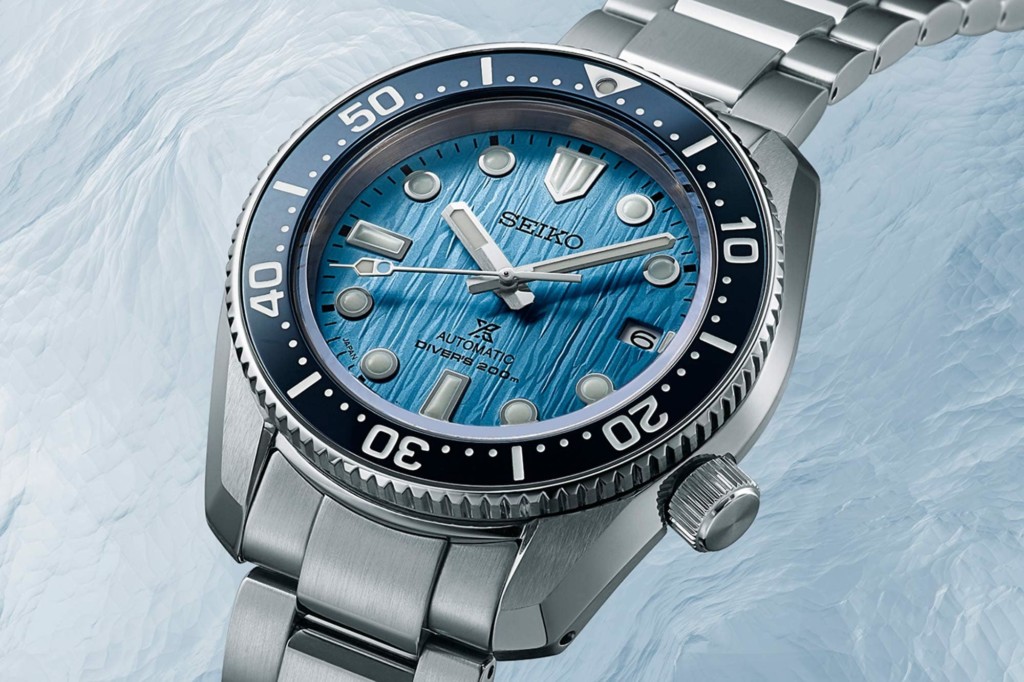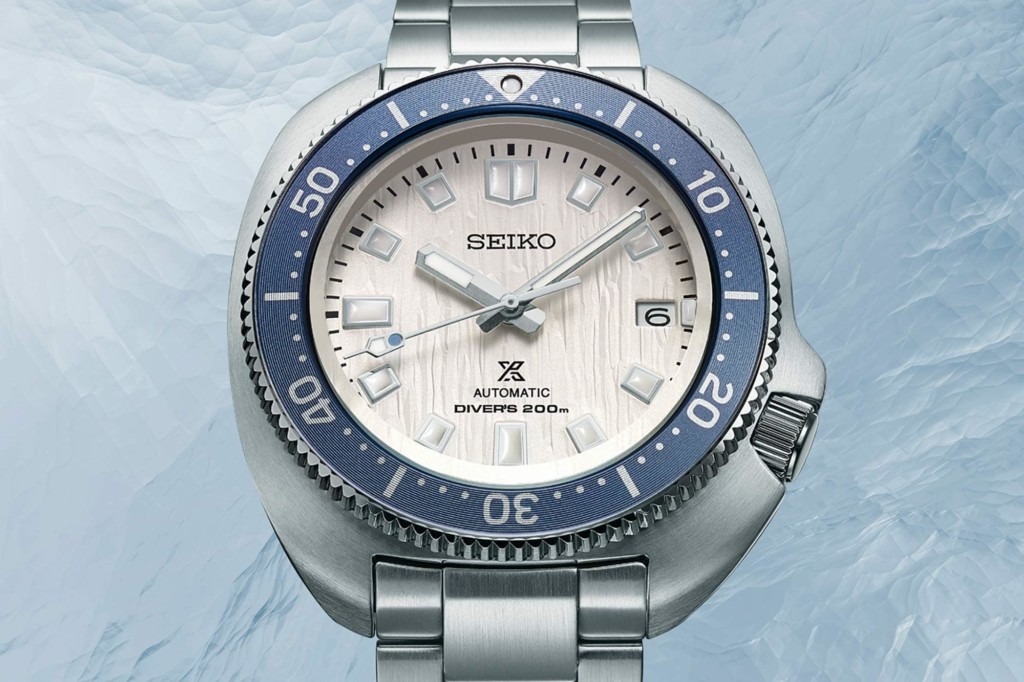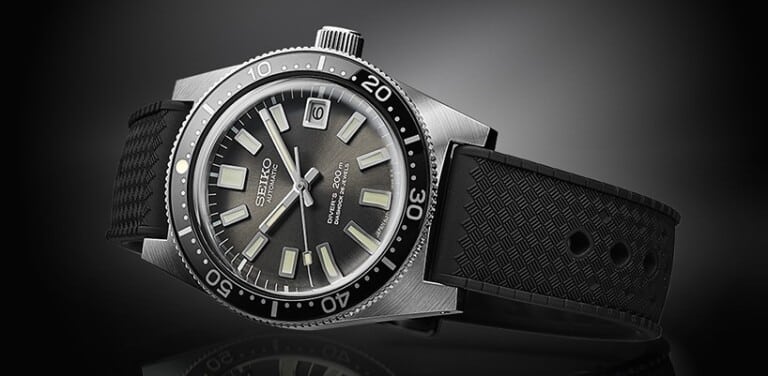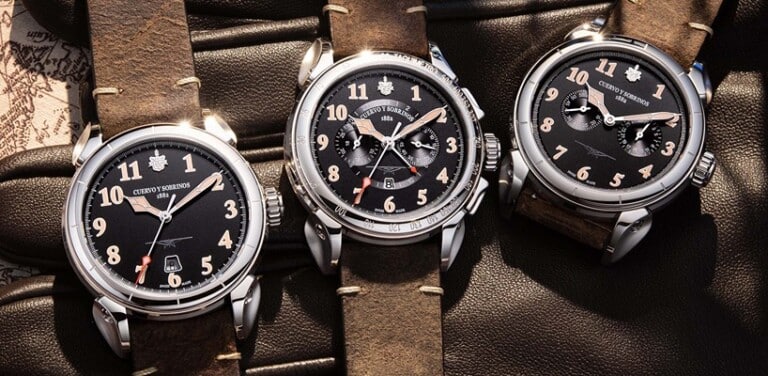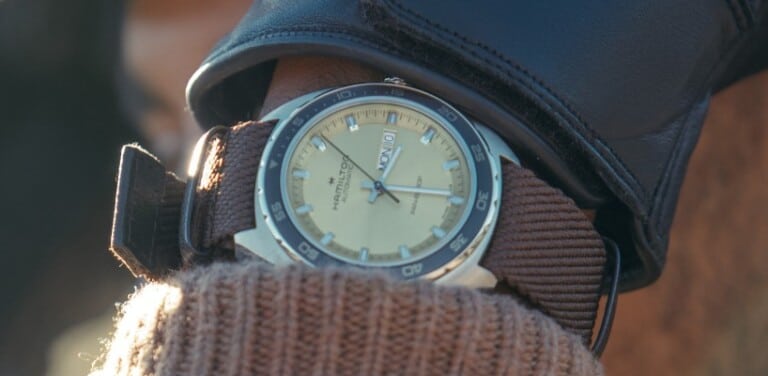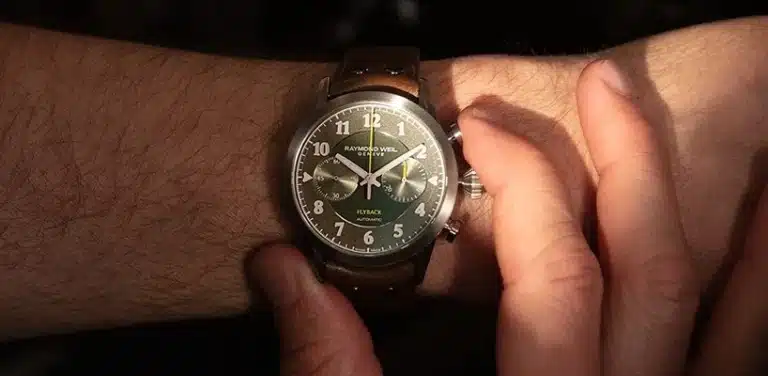If you’re remotely familiar with Seiko, you’ll have already heard the story of the brand’s first ever dive watch launched in 1965. It proved its reliability on the wrists of those part of the Japanese Antarctic Research Expedition from 1966 to 1969. Now, transporting us back to their polar roots, the Japanese watch manufacturer has launched their latest Save the Ocean collection, this one nicknamed “Glacier”. Featuring textured dials inspired by different shades of glacial ice, from deep blue to white, meet the new Seiko Prospex Save the Ocean Glacier series.
There are three Seiko Prospex Save the Ocean Glacier watches to choose from, each mimicking a landmark Seiko divers watch from the brand’s history. The first is reference SPB297J1 which revives the original 1995 Seiko diver. The second is SPB299J1 recalling Seiko’s first Hi-Beat diver’s watch released in 1968. Lastly, reference SPB301J1 is a return of the brand’s famous ‘Captain Willard’ watch which found fame from both Japanese explorer Naomi Uemura and the film Apocalypse Now. All three feature different coloured dials, all contrasting in their hue but bringing to life the same unusual pattern inspired by the structure of glaciers. As always, the 2022 Seiko Prospex Save the Ocean collection will help deliver finance and other support to Seiko’s chosen marine charities. Let’s take a look at these three watches in more detail.
Seiko Prospex Save the Ocean Glacier 1965 Re-Interpretation (SPB297J1)
Inspired by the very watch mentioned in the introduction, the Seiko Prospex Save the Ocean Glacier 1965 Re-Interpretation brings to life the aesthetics of Japan’s and Seiko’s first ever mechanical dive watch. Known as reference 62MAS, the original was famously worn by Japanese Antarctic Expeditions until 1969, proving its immense reliability and robustness. We’ve seen several re-editions of this design over recent years so it’s not a surprise to see it within their 2022 Prospex Save the Ocean series. The new SPB297J1 reference delivers the familiar 42mm wide and 12.5mm tall stainless steel architecture with a black insert unidirectional rotating bezel which contrasts beautifully against the new dark blue dial.
The textured dial delivers faceted hands and rectangular indices, just like that of the 1965 original, coated in modern-day Lumibrite. Powering the hours, minutes, seconds and date window at 3 o’clock, all protected beneath sapphire crystal glass, is the Seiko 6R35 automatic winding movement. The mechanical movement of the Seiko Prospex Save the Ocean Glacier 1965 Re-Interpretation offers a frequency of 21,600vph, a power reserve of 70 hours and 24 jewels, the latter of which are kept hidden behind a solid case back. The case back along with the screw in crown assist in a 200 metre water resistance.
Seiko Prospex Save the Ocean Glacier 1968 Re-Interpretation (SPB299J1)
The Seiko Prospex Save the Ocean Glacier 1968 Re-Interpretation watch takes much of its design from Seiko’s first Hi-Beat Diver’s watch released in 1968. With a 10-beat high precision automatic calibre, a one-piece structure, a mono-directional rotating bezel and screw-down crown, the success of this model lay the foundation for the Seiko diver’s watch development. It was also worn for the first Japanese summit of Mount Everest. For the new SPB299J1 watch, the same 4 o’clock crown is present as well as an angular stainless steel architecture sitting on the wrist at 42mm in diameter and 12.5mm in height. There’s also sapphire crystal glass and a water resistant of 200 metres.
The most obvious difference between the 1965 re-interpretation above and the Seiko Prospex Save the Ocean Glacier 1968 watch is its dial and bezel colourway. For this piece, the dial is finished in a lighter sky-blue colour with the same textured finish while the bezel insert is finished in a glossy dark blue. The bezel is still decorated with a 60 minute diving scale which pairs with rounded hour markers and baton hands coated in Lumibrite. The same Calibre 6R35 automatic winding movement is responsible for the hours, minutes, seconds and date, and offers a familiar power reserve of 70 hours.
Seiko Prospex Save the Ocean Glacier 1970 Re-Interpretation (SPB301J1)
Fast forward another two years and the Seiko Prospex Save the Ocean Glacier 1970 Re-Interpretation watch completes the 2022 Save the Ocean series. Arguably one of the brand’s most collectible designs, this watch will be seen with the nickname ‘Captain Willard’ attached to it following its appearance on the wrist of Martin Sheen’s character in Apocalypse Now. It is also well known for accompanying Japanese explorer Naomi Uemura during his solo dog sled from Greenland to Alaska, an eighteen month journey of 12,000km. As for the design of the new reference SPB301J1, you’ll find the same 42.7mm by 13.2mm stainless steel case as previous re-editions as well as box-shaped Lumibrite indexes and a 200 metre water resistance.
For the dial of the Seiko Prospex Save the Ocean Glacier 1970 Re-Interpretation watch, the brand has opted for the iciest shades of all, white, dressed in silvered hardware for the hours, minutes, seconds and date complication. Yet again, the 6R35 automatic winding movement is responsible for powering said functions and delivers a 70 hour power reserve. The design also features a pale blue unidirectional rotating bezel, a screw in crown, sapphire crystal glass and a three-row link stainless steel bracelet with folding buckle.
If you’d like to learn more about the new Seiko Prospex Save the Ocean “Glacier” 2022 collection and shop the watches for yourself, head over to the Jura Watches website here. Alternatively, get in touch with the team by calling 01335 453453 or send us a message at help@jurawatches.co.uk.
